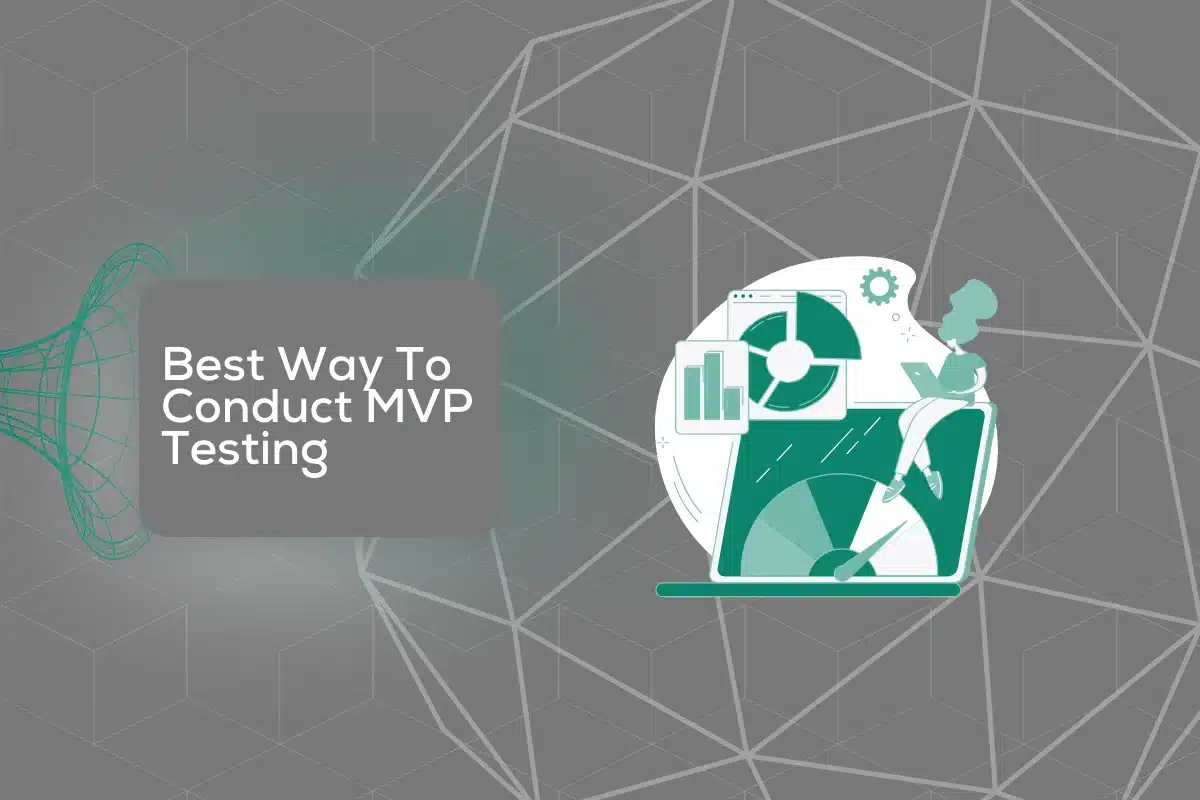The world of product development is changing and becoming more innovative day by day. Technology plays a big role in every single industry nowadays, so conducting MVP testing is more than a must if you want to succeed in this competitive world. In this blog, we’ll explore the best ways to conduct MVP testing – meaning keeping pace in this dynamic environment.
The best way to conduct MVP testing is to start by defining clear hypotheses, building a minimal version of your product, selecting relevant metrics, and testing through methods like A/B testing and user feedback. Real-world examples, such as Dropbox, Instagram, and Twitter, show the transformative potential of MVP testing in turning innovative ideas into successful products.
What Is MVP Testing?
MVP testing serves as a strategic approach to product development, helping to validate ideas, reduce risks, and boost growth. It’s absolutely crucial for startups and established businesses, especially when opting for rapid prototyping software development.
When you release a minimum viable product to a select group of users, your company can gather invaluable feedback and data that guide further development. So, this process not only saves precious time and resources but also minimizes the risk of investing heavily in an idea that may not gain traction.
Why Is MVP Better for Unit Testing?
Using an MVP-like approach in unit testing means focusing on what’s most critical, efficient, and simple. Here are other reasons why it can be beneficial for unit testing:
- Provides focus on the most essential features,
- Gives rapid feedback from users,
- Ensures clear and straightforward testing process,
- Saves resources.
MVPs focus on the core features and can support the robust testing of individual components in a software application.

How to Start MVP Testing?
MVP software development requires some time, especially if you want to do it professionally and have successful desktop development. Not only will it help you transform your concept into a concrete product, but it will also get you the insights needed to refine and enhance your product. On that note, here are the starting points:
- Define your hypothesis – This statement anticipates the outcome upon product launch and explains the reasons behind it.
- Choose your metrics – These metrics measure your product’s performance and audience response. Opt for relevant, actionable, and dependable metrics.
- Select your methods – These are the ways through which you gather data from your audience to test your product. It’s crucial to choose methods that align with your product, market segment, and development stage.
- Run your experiments – These experiments should be systematic, ethical, and objective. Key steps include defining your sample size and selection criteria.
- Iterate your product – This means modifying your product using insights from experiments and involves prioritizing key issues, brainstorming solutions, testing them, and verifying their effectiveness.
Explore the Best Ways and Methods for Minimum Viable Product Testing
Learning how important MVPs actually are for your products isn’t enough if you want to completely use their power. Whether you’re in the middle of hardware prototyping or software prototyping, let’s check out the top five best methods you should consider when performing minimum viable product testing.
#1 Start Your MVPs Testing With Customer Interviews
Conducting interviews with potential customers stands out as the most effective means to validate your MVP. These interviews provide a direct channel for obtaining feedback from prospective users of your product. They offer a valuable opportunity to collect insights into the concerns and expectations of your target audience, enabling you to refine your product before its market debut.

#2 Crowdfunding Is the Most Reliable Test You Can Get
Platforms like Kickstarter and Indiegogo serve as valuable resources for innovators seeking to fund MVP prototypes. These crowdfunding platforms enable creators to secure funds from individuals who share an interest in their projects. The advantages of crowdfunding encompass a pre-established user base that expresses genuine interest in your product idea, along with the financial support required to navigate the production phase.
A good example of successful crowdfunding is the Pebble E-Paper Watch. By positioning themselves as the first affordable smartwatch on Kickstarter, they garnered an impressive $10 million in funding within a mere 40 days, attributing their success to their value-driven marketing strategy.
#3 Explainer Videos Are a Great Option if You Don’t Have a Product Yet
When you’re in the early stages of product development and don’t have a tangible product, an explainer video serves as an excellent alternative to a formal corporate presentation. A notable example is Dropbox, which effectively used an explainer video to demonstrate its product’s functionality to a wide audience via YouTube. Despite its simplicity, the video struck the right chord, resulting in a significant surge in signups that played a crucial role in Dropbox’s journey to its current position.
#4 Landing Pages Offer Valuable Insights
Landing pages are valuable sources of insights into your prospective user community. Employing analytics tools can assist in collecting essential metrics, allowing you to gauge user interest and understand their interactions with your page. Landing pages prove to be informative resources for both users and MVP developers, guiding them in steering a product in the desired direction.
#5 Choose the Better Version With A/B Tests
A/B testing is a method to identify the better version when faced with two options. For instance, you can design two web pages to display two distinct iterations of your MVP. Subsequently, you can assess user feedback through an A/B test, utilizing tools like Google Analytics and Unbounce.

What Are the Common MVP Test Challenges?
Did you know that nearly half of startups, around 42%, face failure due to the development of products that lack market demand? Employing an MVP can serve as a shield against this pitfall. But this doesn’t mean you can’t make some mistakes. Here are some of the most common missteps you should avoid:
- Unrealistic expectations – Avoid expecting flawless design and immediate success, as it can lead to frustration and disappointment. Instead, recognize and communicate the primary role and constraints of your MVP.
- Insufficient resources – Don’t underestimate the resources (time, money, or skills) needed for MVP development, and carefully plan and budget.
- Scope creep – Adding too many features makes the MVP complicated and expensive and slows down learning. To avoid this, focus on your product’s main benefit, the main issue it solves, and the fewest features needed to show that benefit to customers.
Juratech Solutions Is an MVP Development Company With Top-Notch Tests and Approaches
MVP testing is not just a technique – it’s a mindset that empowers you to build and improve your product effectively. So, it’s best to have the professionals from Juratech Solutions by your side who will help you conduct the MVP testing for your product in the best way possible.
Get a closer look at what we do because we’re not just a desktop application development company but a mobile app development company as well. We can also offer you backend web development and frontend web development services. Contact us and gain all the necessary insights and efficient solutions since your product’s success is our priority.







